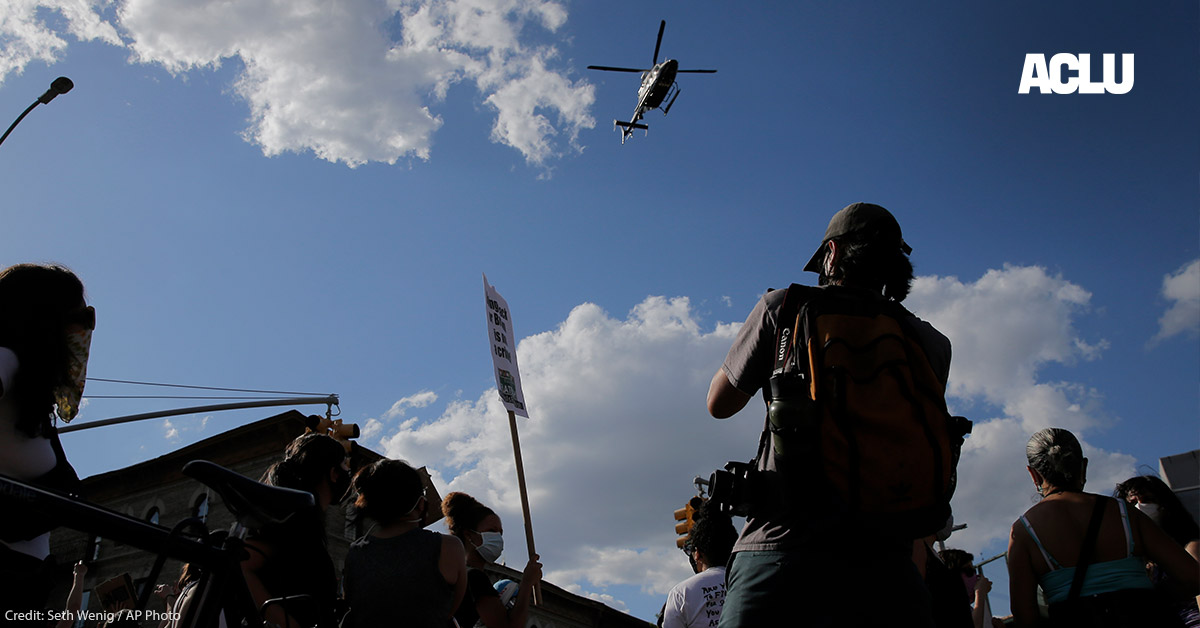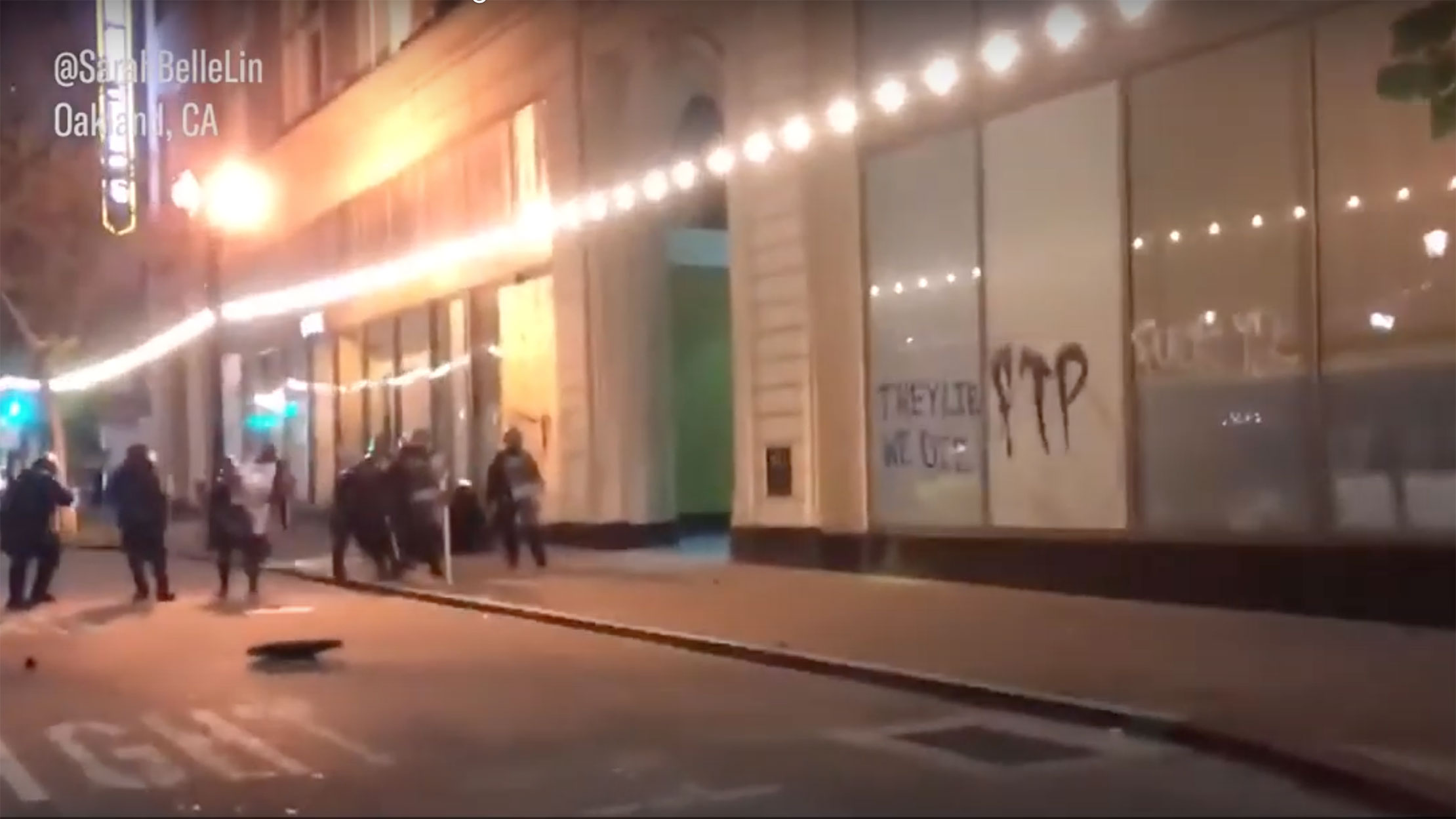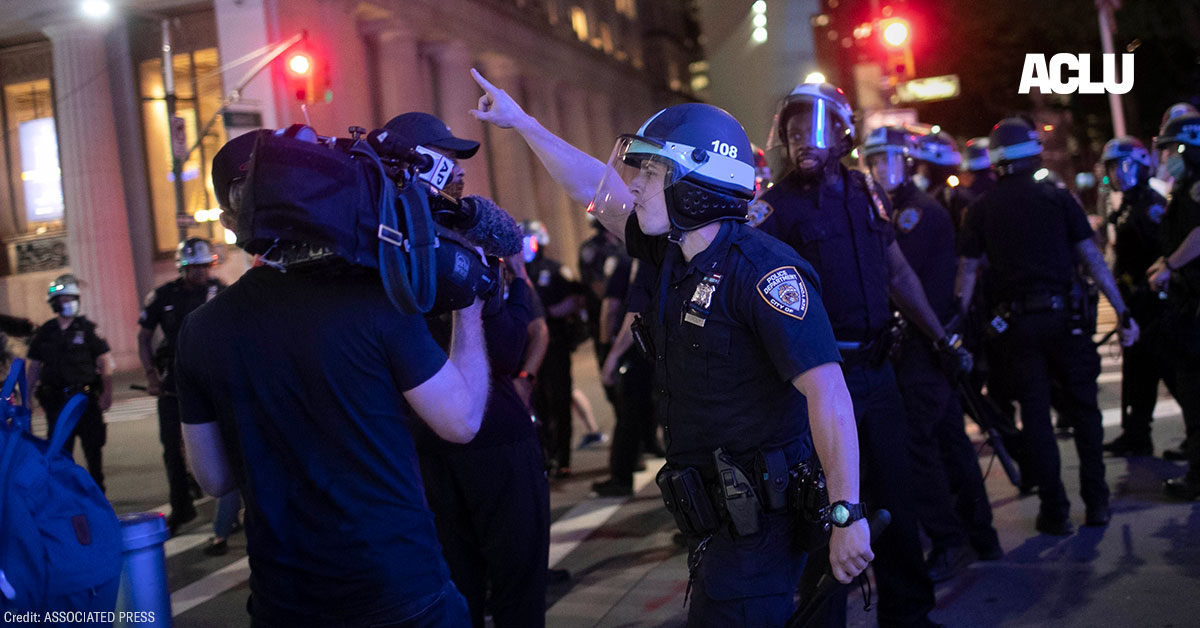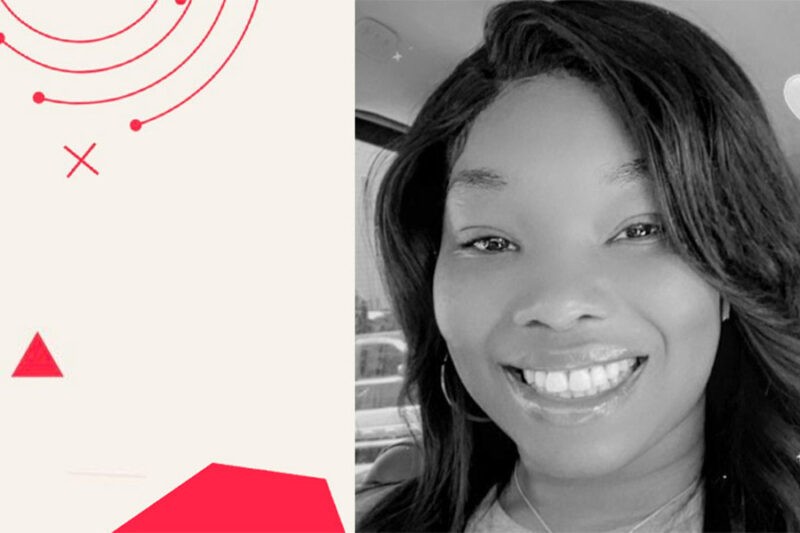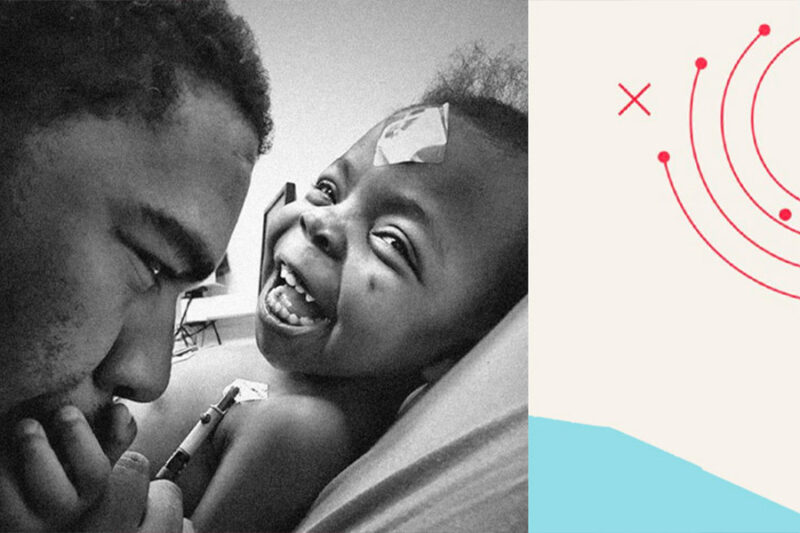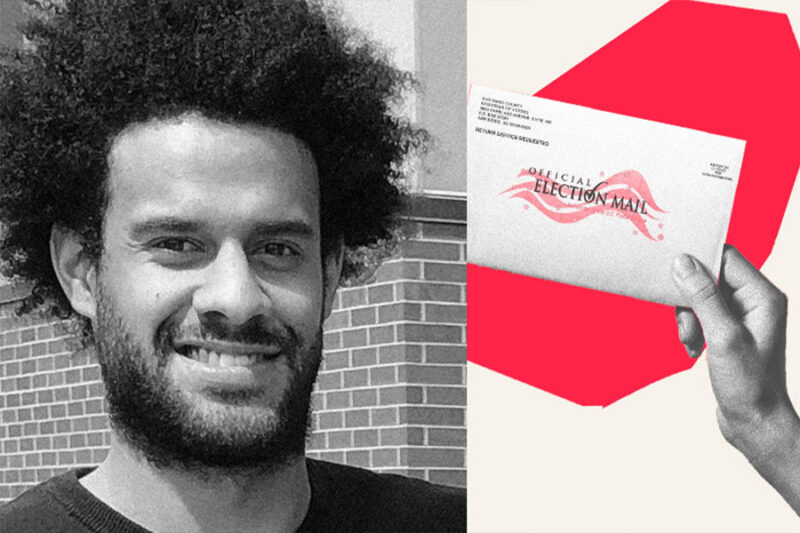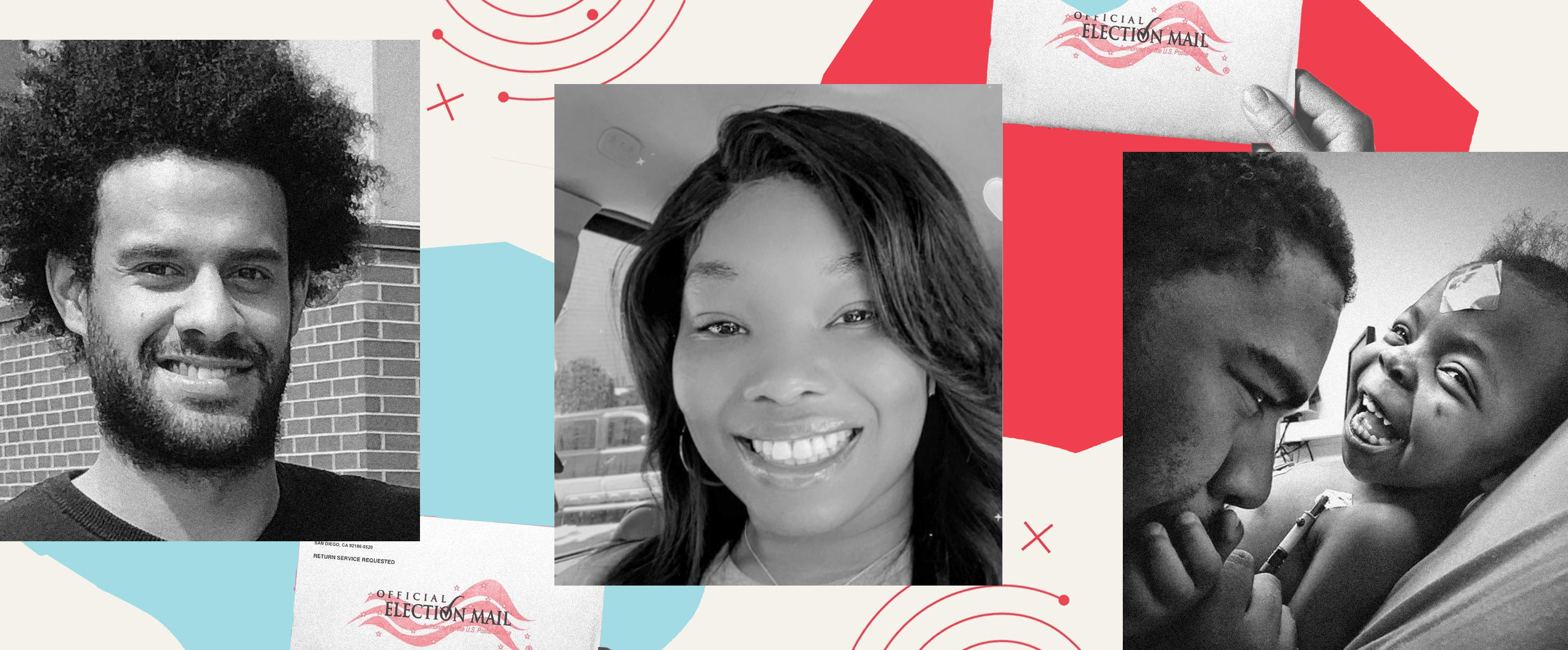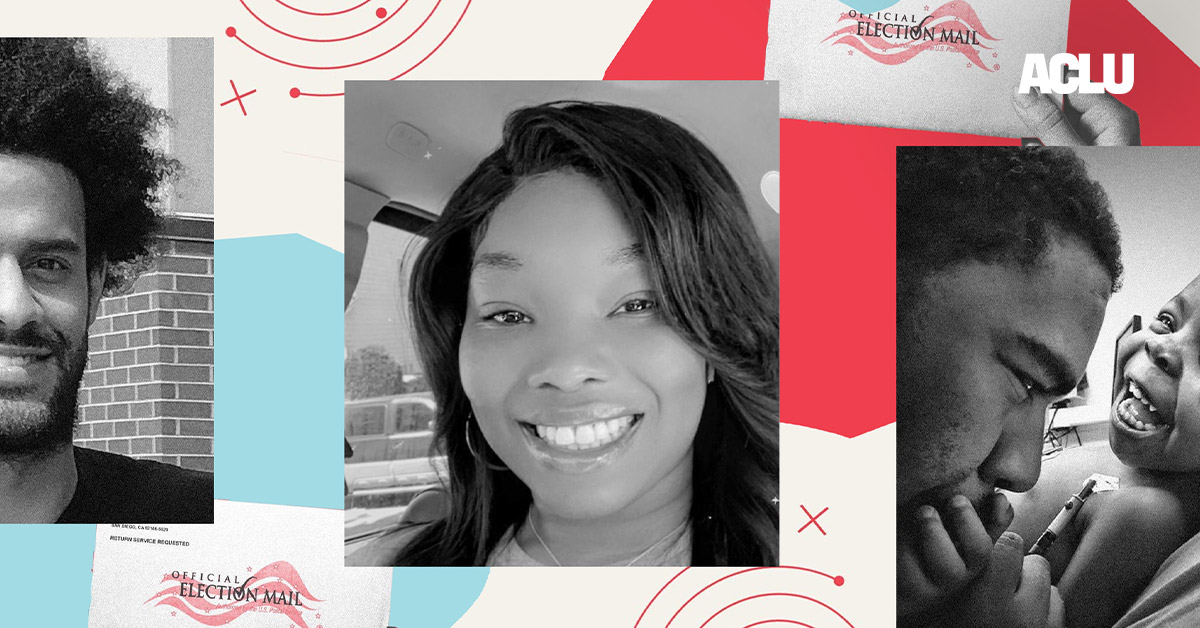By Jay Stanley, ACLU Senior Policy Analyst
For activists across the country who have taken to the streets to demand racial justice and police accountability, the sound of protest has been not just the sound of chants, but the sound of helicopters. For many police departments, these protests have been an occasion to bring out all their high-tech toys, and those include surveillance aircraft, ranging from police helicopters to fixed-wing surveillance aircraft to drones. Like all expensive law enforcement practices, police aerial surveillance should be questioned and reevaluated as part of a broader divestment from police in the United States. That is doubly true considering the powerful new surveillance technologies that will increasingly be put into the skies above American cities and towns — if nothing is done to stop them.
Last week, U.S. Customs and Border Protection (CBP) was discovered flying a large, high-altitude Predator drone above Minneapolis. CBP has no business deploying military-grade drones — authorized by Congress for border patrol — over domestic political protests, and these drones should not be flying over Minneapolis, or any other U.S. community. Such flights raise questions about the lack of transparency (we don’t know what kinds of equipment the agency had on board), the lack of privacy protections (CBP being a troubled agency with a particular absence of institutional respect for privacy), and mission creep.
The Minneapolis large-drone deployment was especially ominous because it involved surveillance of people protesting police abuse — but it’s just the tip of the iceberg. CBP is the only non-military agency that has received permission from the FAA to fly large drones at high altitudes, but it frequently lends out its Predators to other agencies for uses ranging far afield from CBP’s border mission — and from the border. The defense contractor General Atomics is carrying out tests of a similar drone flight over San Diego this year.
Of course, surveillance abuses can come not just from drones but also from piloted aircraft. In 2004, for example, a New York City couple was filmed having sex at night on a pitch-black rooftop balcony — where they had every reason to expect privacy — by a $9.8 million NYPD helicopter equipped with night vision that had been deployed to monitor a nearby bicycle protest. Rather than apologize, NYPD officials flatly denied that this filming constituted an abuse, telling a television reporter, “This is what police in helicopters are supposed to do, check out people to make sure no one is . . . doing anything illegal.”
More recently, we have seen piloted airplanes used for long-term, mass surveillance over the entire city of Baltimore using wide-area motion imagery. This is just the latest surveillance technique to be deployed against communities of color, and is a clear violation of residents’ constitutional right to privacy. A historic legal battle over the program is now underway as the result of an ACLU legal challenge.
The FBI also regularly flies “a small air force” of surveillance aircraft above American cities — including over protest marches such as those in Ferguson, Missouri and in Baltimore following the 2015 death of Freddie Gray in police custody. The planes are typically registered to front companies to hide their identities as government planes. In addition to the CBP drone in Minneapolis, the Department of Homeland Security deployed piloted surveillance aircraft over George Floyd protests in Washington, D.C. and 13 other cities, sending video to a centralized CBP facility, letting federal agents view live aerial footage on their phones, and storing the footage for potential use in criminal investigations.
Ultimately, the answer is for communities — and the federal government — to put in place strong privacy protections that apply equally to drones and piloted aircraft.
Today, police helicopters — which first appeared in the late 1940s — have become a well-established law enforcement tool in many cities. Police helicopters and fixed wing aircraft are used for a variety of purposes including patrol, pursuit, search and rescue, and surveillance.
But police helicopters are also used to intimidate through a militaristic display of raw power. That role was epitomized by the use of a military Blackhawk helicopter last week to disperse peaceful racial justice protesters in Washington, D.C. by hovering low over a street, creating wind gusts strong enough to snap tree limbs. Experts call this tactic a “show of force” and say it’s a common military tactic to “intimidate and remind potential enemies of your armed presence.”
Beyond such a clearly abusive deployment, however, even civilian police helicopters can have a similar effect. Police helicopters — many of which are military surplus aircraft — are large, loud machines, heavily associated with military weaponry and which, by virtue of their position in the sky, signify surveillance, dominance, and control. In at least some places they are consciously used by police for the purpose of deterring crime — which might sound like a good thing until you pause to reflect that they do so by making all residents of certain neighborhoods feel as though they are being watched by an overpowering occupying force. And those neighborhoods aren’t affluent white ones.
American communities should take a hard look at their police departments’ aerial surveillance programs as part of an overall reassessment and divestment from law enforcement. How beneficial are they really for the community as a whole? Are their benefits proportional to their cost — including the opportunity cost of underfunding social programs to support expensive aircraft? To what extent are they used in positive ways such as for search and rescue, compared to negative ones such as “dominating” people exercising their First Amendment right to peaceably assemble? Do they fit into positive community visions that stress support, uplift, and assistance, rather than the harsh hammer of a militarized enforcement approach?
For many communities, the answer will be no, and those communities should end their aerial surveillance programs. Maybe others will decide to allow their law enforcement departments to retain aerial surveillance capabilities — but those should be re-focused, regulated, and scaled back.
Regulations should ensure transparency so communities can decide for themselves what kind of surveillance the police departments that serve them are deploying. For no justifiable reason, CBP refused to say what agency it was flying its Predators over Minneapolis on behalf of and whether it was a federal or state agency. (The New York Times reported weeks later that it was for a branch of Immigration and Customs Enforcement.) We also don’t know what kinds of surveillance technologies those drones are carrying. The U.S. House of Representatives has launched an investigation into the case, but shouldn’t take a congressional investigation to get such information.
The privacy protections for all aerial surveillance that we think are necessary (which we have previously laid out with regard to drones) would not allow for aerial mass surveillance of any kind, including wide-area surveillance and the use of Dirtboxes — electronic dragnets that sweep up people’s cell phone data. In general, communities should engage in careful monitoring and regulation of the devices that are installed on law enforcement aircraft. Police also shouldn’t be permitted to engage in suspicionless aerial surveillance — flying around aimlessly looking for trouble based on the hunches or curiosity of their pilots, or for any other form of patrol. Where aerial surveillance is used it should be carried out only in emergencies, for specific purposes that don’t implicate privacy such as accident- or crime-scene photography, or where there are specific and articulable grounds to believe that the aircraft will collect evidence relating to a specific instance of criminal wrongdoing (preferably through a warrant requirement as in some states such as Minnesota).
Law enforcement will argue that it needs aerial surveillance to achieve “situational awareness” across large areas during times of civil unrest and/or large protests. Communities should do a hard examination of that claim. Just how often does law enforcement have a legitimate need for that kind of surveillance? Can the aims of such flights be achieved through ground observations or other techniques that have lower costs, fewer chilling effects on protest, and less risk of lending themselves to abusive surveillance? If and when there is a genuine need for aerial surveillance, are high-tech surveillance devices necessary, or can that need be met through plain-view visual surveillance? And how much is the community paying for what is most likely a rarely-needed capability?
Good privacy protections are especially important given the futuristic surveillance devices that are now available. Drones and other aircraft are a platform — one that can be used to carry any number of other technologies up into the sky. Among the sensors they can carry are GPS, radar, range-finders, magnetic-field change sensing, sonar, radio frequency sensors, and chemical and biochemical sensors. They can carry Lidar, which can be used to see through some barriers such as foliage and for such functions as change detection, in which even small changes in a landscape, such as tire tracks, are automatically flagged. And of course, aircraft can carry all kinds of cameras, including super-powerful gigapixel lens arrays that can sweep in enormous areas, and infrared sensors that “see” beyond the visual part of the electromagnetic spectrum.
Perhaps most significantly, camera footage and other data can increasingly be analyzed using face recognition, license plate recognition, and other artificial intelligence techniques that promise to supercharge the analysis of datasets that are too large for humans to reasonably review. That’s not even counting whatever technologies may be developed in the future.
Given the role that aerial surveillance has played in the George Floyd and other protests, as well as the tsunami of new aerial surveillance technologies that are coming our way, such capabilities should be part of the conversation over police divestment that the recent protests have sparked.
Date
Wednesday, June 24, 2020 - 11:00amFeatured image

